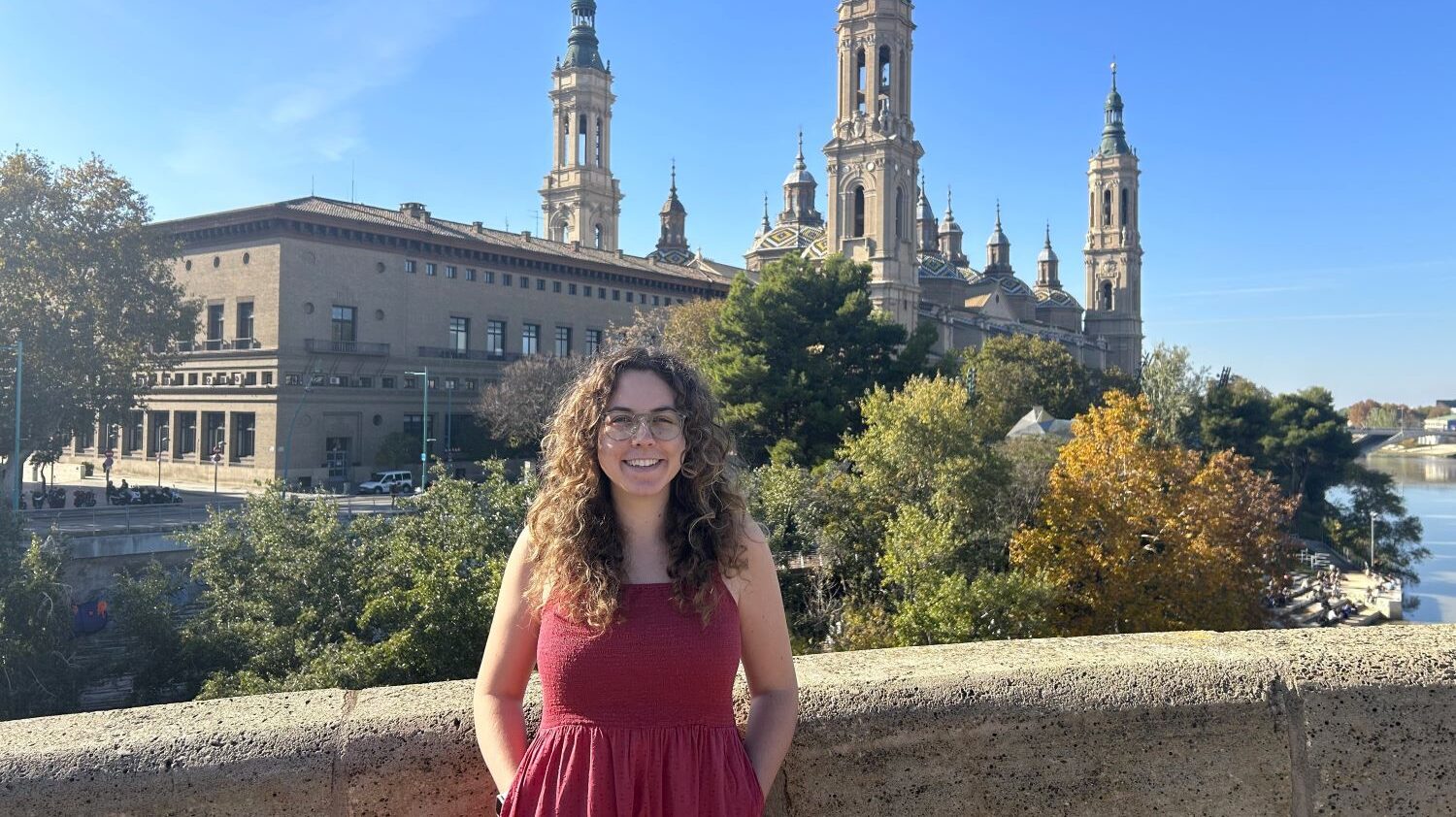Comparing Language in the Yucatan

It’s no secret that language and accents evolve over time. But what do those changes say about the speakers themselves? What can they tell us about identity?
NC State graduate student Alex Hyler explored those questions while studying unique forms of Spanish in Yucatan, Mexico. In 2016, Hyler traveled to Yucatan to conduct interviews and collect data from about a dozen local Spanish speakers. Analyzing differences in their speech, her research aimed to answer what those variations indicate about multiple generations of speakers.
We caught up with Hyler, who is pursuing her master’s degree in Hispanic linguistics, about her research and experience collecting data in Yucatan.
Q: What did you study?
Hyler: I studied the prosodic rhythm of Yucatan Spanish, which is a dialect of Spanish in contact with the Yucatec Maya language. Prosodic rhythm, or timing, refers to the relative length of stressed versus unstressed syllables; one can classify a language as either syllable-timed or stress-timed. I specifically looked at the differences in the Yucatan Spanish accent by comparing language groups (monolingual speakers versus bilingual Maya-Spanish speakers). Some previous work I did with professor Dr. Jim Michnowicz suggested that the accent of Yucatan Spanish is changing, due in part to social changes occurring among the Maya-speaking population. I was interested in researching this further.
One way to study accent is by comparing intervals between adjacent vowels and consonants in speech. A higher variation of intervals generally indicates a more stress-timed language (some longer syllables, some shorter syllables) whereas lower variation indicates a more syllable-timed language (every syllable has the same length). Spanish is an example of a syllable-timed language, whereas English is an example of a stress-timed language.
I wanted to know if there was a difference in the prosodic rhythm of Yucatan Spanish compared to “standard” Spanish. And if there are differences, how do age and a speaker’s language background affect those patterns?

Q: You traveled to Yucatan, Mexico, as part of this research. What was that experience like and what type of data did you collect?
Hyler: I received a grant from Sigma Delta Pi Spanish Honor Society to travel to Merida, Yucatan, for two weeks last June. This was my first time to the Yucatan Peninsula, and it was such an incredible opportunity to travel, speak Spanish and learn about the Maya-Spanish culture. I conducted sociolinguistic interviews with 12 speakers in Merida. Dr. Michnowicz had several connections at the local universities in Merida; I was able to find the majority of my participants through his connections.
Each interview lasted about 30 minutes, and I strived to ask open-ended questions in order to obtain as much spontaneous speech as possible. I spent several days interviewing participants, but I also took time to travel outside of the city and visit some ancient Mayan ruins such as Uxmal and Chichen Itza. Traveling to these magnificent ruins was eye-opening for me; I had never traveled to ancient ruins before and to learn about how they were skillfully designed was just incredible. As a Spanish major in my undergraduate studies at NC State, I always read about how Mayan civilizations designed pyramids and structures to coordinate with astronomical (or celestial) objects, but to see ancient Mayan hieroglyphs, climb to the top of a pyramid and research the Yucatan accent was truly the highlight of my graduate studies. From my time in Mexico and by interacting with the locals, these experiences further solidified my understanding of the importance of Yucatan language and culture.
After traveling to Mexico last summer, I compared rhythm patterns in my data with data Dr. Michnowicz previously collected in the Yucatan in 2005. Overall, I looked at three different groups: 2005 older speakers, 2005 younger speakers and 2016 speakers.

Q: What did you find?
Hyler: My results indicate that older speakers show convergence toward Maya. At the same time, younger speakers in 2005 appeared to be moving away from both Maya and Mexico City Spanish, distinguishing themselves from both groups. The younger speakers in 2016 also appeared to be moving away from Maya, but are also patterning more closely to Mexico City Spanish — suggesting that the standard Spanish spoken in Mexico City is having an effect on Yucatan Spanish.
Q: What are some possible implications of your findings? What does this mean for speakers of Yucatan Spanish?
Hyler: Language and identity play an important role in my research. The people from Yucatan have a strong sense of identity; many people living in the Yucatan consider themselves yucateco, not mexicano (even though Yucatan is a state of Mexico). An interesting word that is commonly used in the Yucatan to refer to foreigners or people not from the area is huaches. With the use of huache and considering themselves yucateco instead of mexicano, we can get an idea of the importance of identity in the Yucatan, which could be an explanation for why some speakers are distinguishing themselves from Mexico City. My results do support previous studies that have found rhythmic convergence across languages in contact.
One reason I enjoy studying language is that it is constantly changing; we see different values and patterns across the three groups I looked at. I think something I can look at in the future would be to go back in five to ten years and analyze speech to see how young speakers are grouping in the Yucatan.


